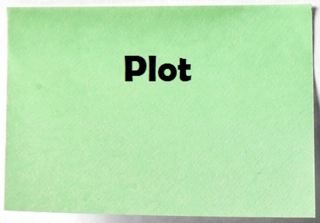How to create suspense in your fiction story
If you’re  story feels flat, you may want to look at the plot and ask yourself, “Do my readers have a sense of anticipation yet uncertainty about what will come next?” If the answer is “No,” then your story lacks suspense.
story feels flat, you may want to look at the plot and ask yourself, “Do my readers have a sense of anticipation yet uncertainty about what will come next?” If the answer is “No,” then your story lacks suspense.
“Suspense” is difficult to define if only because there are so many different perceptions about exactly what it is. Further, suspense for one genre, such as a mystery story, may be more subdued than in others, such as a western or science fiction story.
At its core, though, suspense in any genre occurs when the outcome for a character is uncertain. The more a reader is invested in finding out the answer to that uncertainty, the more suspenseful the story. In large part, suspense is enhanced by the building of tension.
Writers can create suspense in a number of ways:
g Create characters with problems – If your main character has no central problem to solve and has no motive for solving it, you don’t have much of a story. Deepen the suspense by giving the main character good reason to be resistant to resolving the story’s central problem.
g Withhold the hidden story – As a writer, you know the full backstory of your characters and how the plot will unfold. Don’t spill that to readers. Divulge it in small portions, and only when necessary to further the plot.
g Hide character’s motives from other characters – While readers need to know why your main character behaves a certain way, other characters don’t need to know that. Your main character then doesn’t understand why other characters act as they do, and this inexplicable behavior can lead to conflict between them.
g Employ the Hitchcock Effect – Movie master Alfred Hitchcock allowed the audience, through a character’s dialogue and scenery shots, to infer a danger. Whether or not the character then might step into that dangerous situation creates suspense.
g Add some action – If your main character has nothing to do, then there are no problems to resolve, and the story quickly loses momentum (Of course, the classic “Waiting for Godot” has virtually no action, but the author utilizes other methods of creating suspense to make up for this.). All action should have a point to it, however; mainly, it needs to propel the main character toward resolving the story’s central problem.
Need an editor? Having your book, business document or academic paper proofread or edited before submitting it can prove invaluable. In an economic climate where you face heavy competition, your writing needs a second eye to give you the edge. I can provide that second eye.
Related articles
 Add 'big scenes' to give story some oomph
Add 'big scenes' to give story some oomph Utilize Chekhov's gun to make plot work
Utilize Chekhov's gun to make plot work



